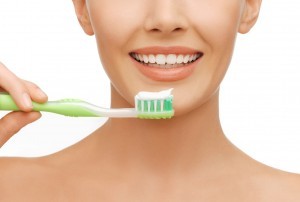 In the fight against tooth decay, having more arrows in your quiver is always better than having less. So it’s no surprise that when researchers started to see excellent results using plasma technology to destroy tooth-decay-causing bacteria, dentists around the planet took note. Here’s what to know.
In the fight against tooth decay, having more arrows in your quiver is always better than having less. So it’s no surprise that when researchers started to see excellent results using plasma technology to destroy tooth-decay-causing bacteria, dentists around the planet took note. Here’s what to know.
The Study On Plasma
The research is not entirely new. In 2010, a study published in the February issue of the Journal of Medical Microbiology discussed so-called plasma jets that were proving effective in obliterating the bacteria that causes tooth decay.
Researchers were able to show that a small, blowtorch-like device emitting a cool beam of purple plasma could wipe out the oral bacteria in cavities. That meant being able to leave more tooth structure intact than a drill and less pain in the mouth of the patient. Perhaps the most striking result from the study was how much more bacteria was eliminated using the plasma process, 10,000 times the amount removed by the standard drill.
Dentists began to reimagine their craft—less pain, less time in the dental chair could mean more patients in those chairs too.
The Stuff Of Plasma
When it comes to matter, most folks think of three states: solid, liquid and gas. But there’s actually a fourth, plasma. Plasma shows up in many forms around the universe, from the stunning aurora borealis and in the nuclear reactions of the sun to the element that fired up your circa 2010 flatscreen TV.
There are two types of plasma: thermal and non-thermal, the latter of which is also called cold plasma or atmospheric plasma. Thermal plasma has electrons and heavy particles existing at the same temperature. Cold Atmospheric Plasma (CAP) is said to be non-thermal because its electrons are kept at a hotter temperature than the heavy particles, which are at room temperature. “Cold” plasmas are usually held at a temperature of about 100 degrees Fahrenheit and are made in the lab by partially ionizing helium gas with extremely brief pulses of microwaves.
How Plasma Kills Bacteria
With all this talk about heat, your first guess as to how a plasma actually kills bacteria may be by concentrating heat. You’d be wrong. Remember, it’s a relatively low heat for plasma and if it weren’t there’d likely be tissue damage done to your mouth. Your next guess may be as good as any scientist, because they’re still in guessing mode on how this technology kills bacteria.
The lead researcher from the 2010 study and an assistant professor of dentistry at Saarland University in Germany, Stefan Rupf, has a theory though. He believes that when the plasma jet fires, it charges oxygen gas in the air surrounding the bacteria. This process creates highly reactive molecules that break down the bacteria’s protective walls. It’s akin to death by fire, it’s not the heat that kills you, it’s the smoke.
A Future With Plasma
Killing off bacteria with plasma beams in a lab is one thing. Applying that technology to something that fits in the hand of your dentist and is safe in the mouth of a patient is another thing. Even in 2020, most of us don’t think about plasma drills when we think of dental cleanings. However, the tools have been refined and tech companies like Diener Electric believed in it enough to purchase the website Plasma.com.
On their site, the company lists the following benefits to cleaning with plasma technology:
- Cleans even in the smallest cracks and gaps
- Cleans all component surfaces in one work step, including the interior of hollow bodies
- Residue-free removal of breakdown products by vacuum extraction
- No damage to solvent-sensitive surfaces by chemical cleaning agents
- Removal also of molecularly fine residues
- Fit for immediate further processing. No venting or removal of solvents
- No storage and disposal of hazardous, polluting and harmful cleaning agents
- Very low process costs
Perhaps the biggest benefit is one that has nothing to do with your teeth and everything to do with your ears. A plasma jet drill does not make the chill-causing sound of a traditional dentist drill. And that may be half the battle when it comes to making a dental patient more patient with their dental care.







Leave a Reply